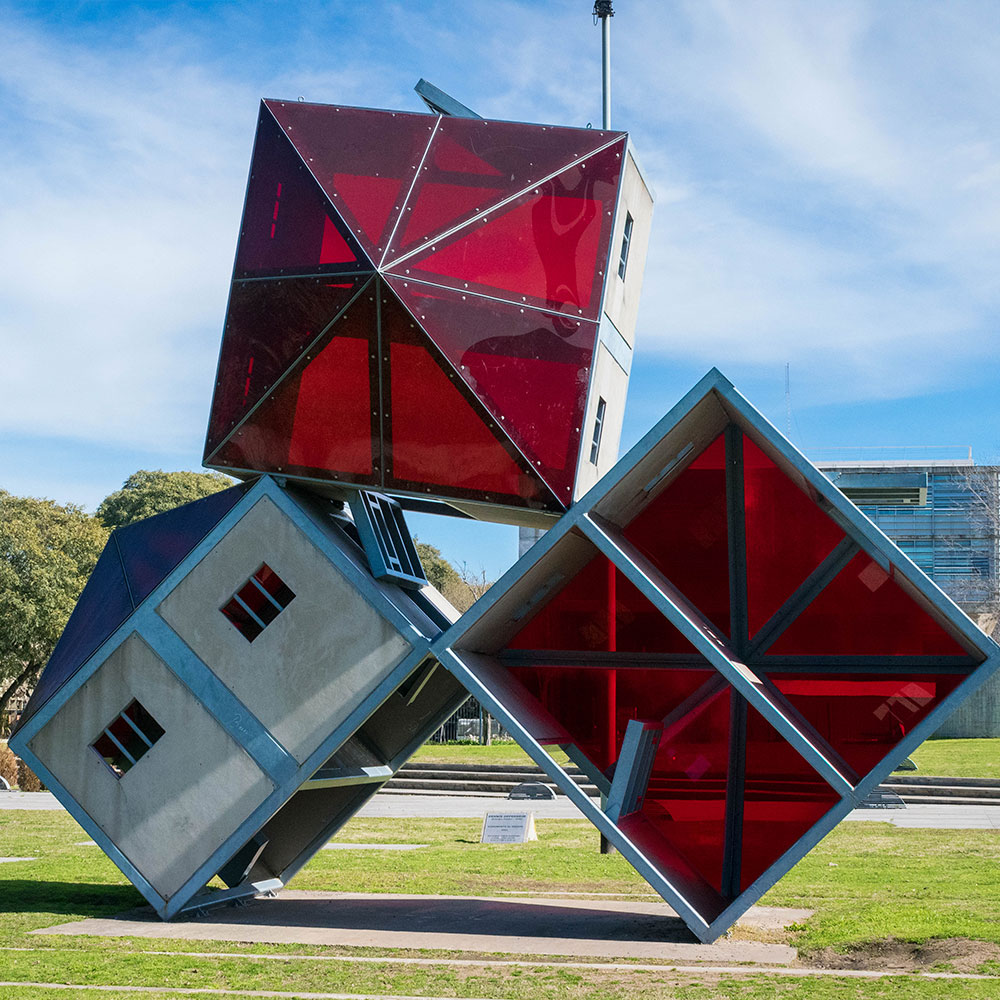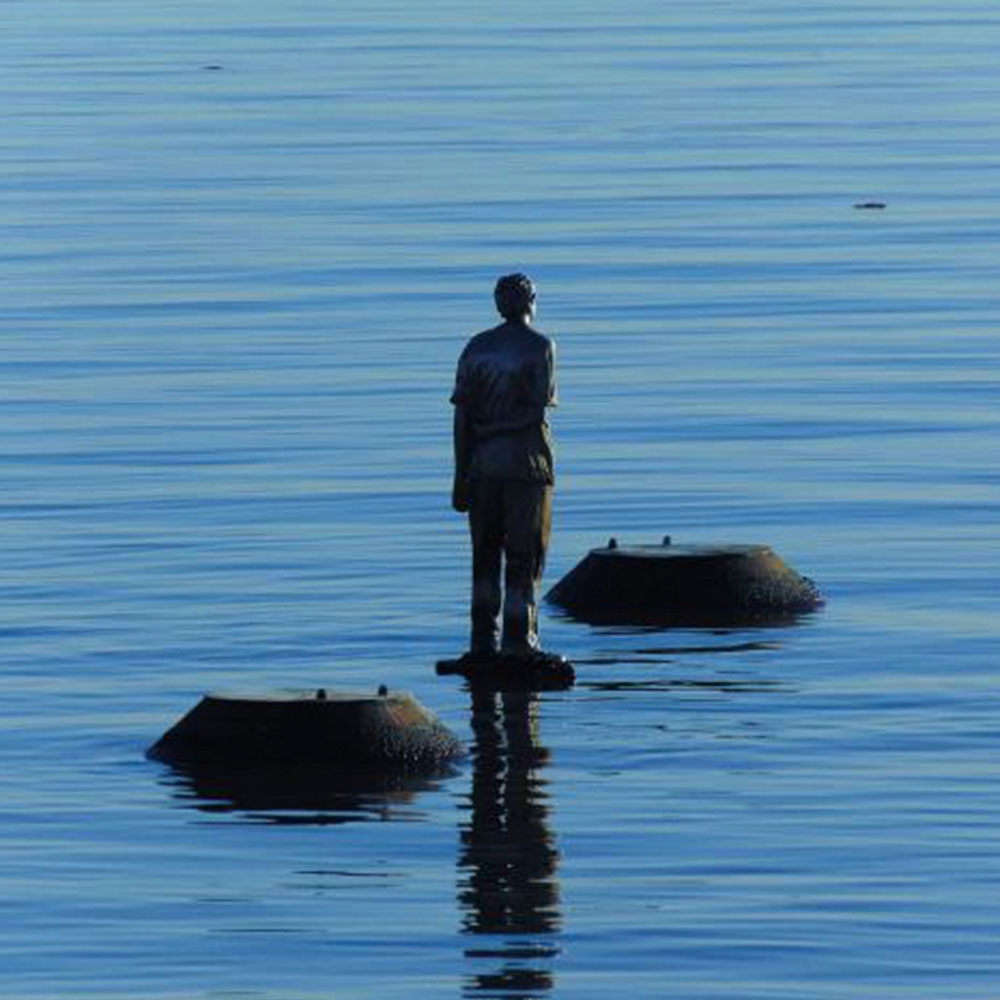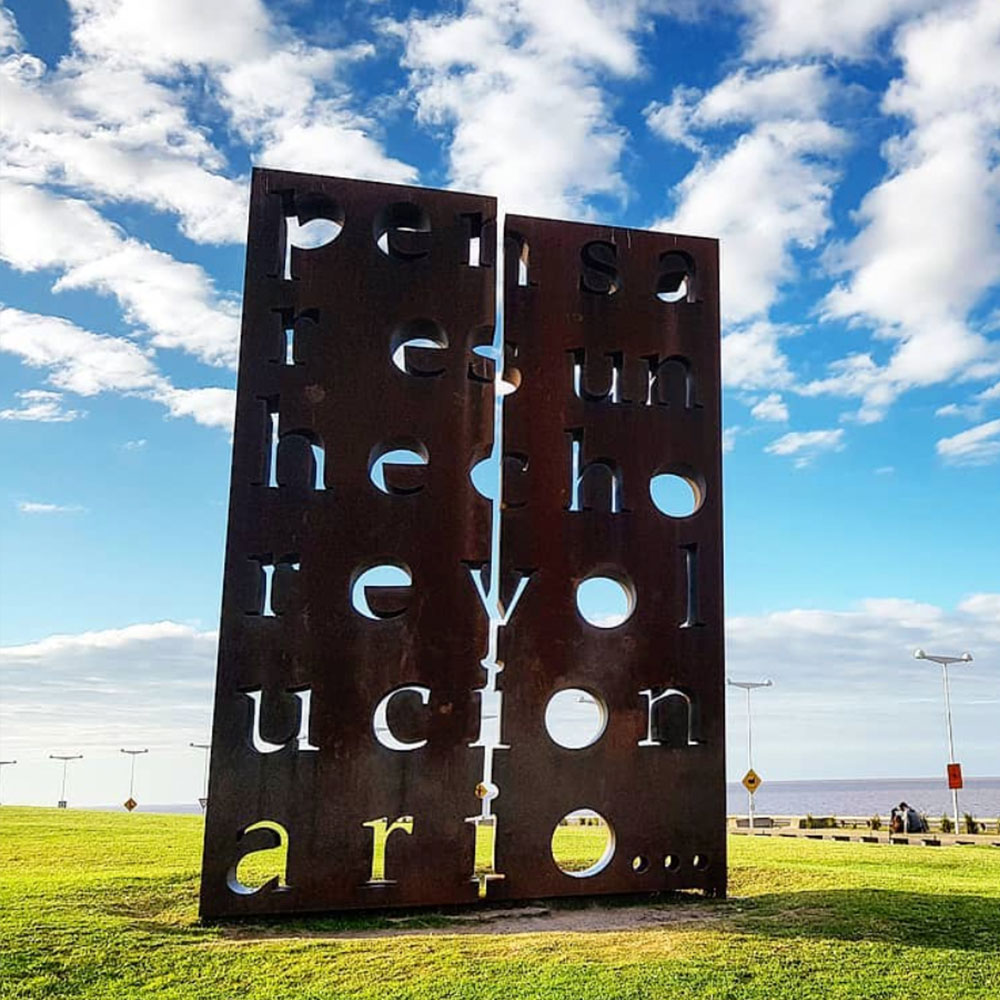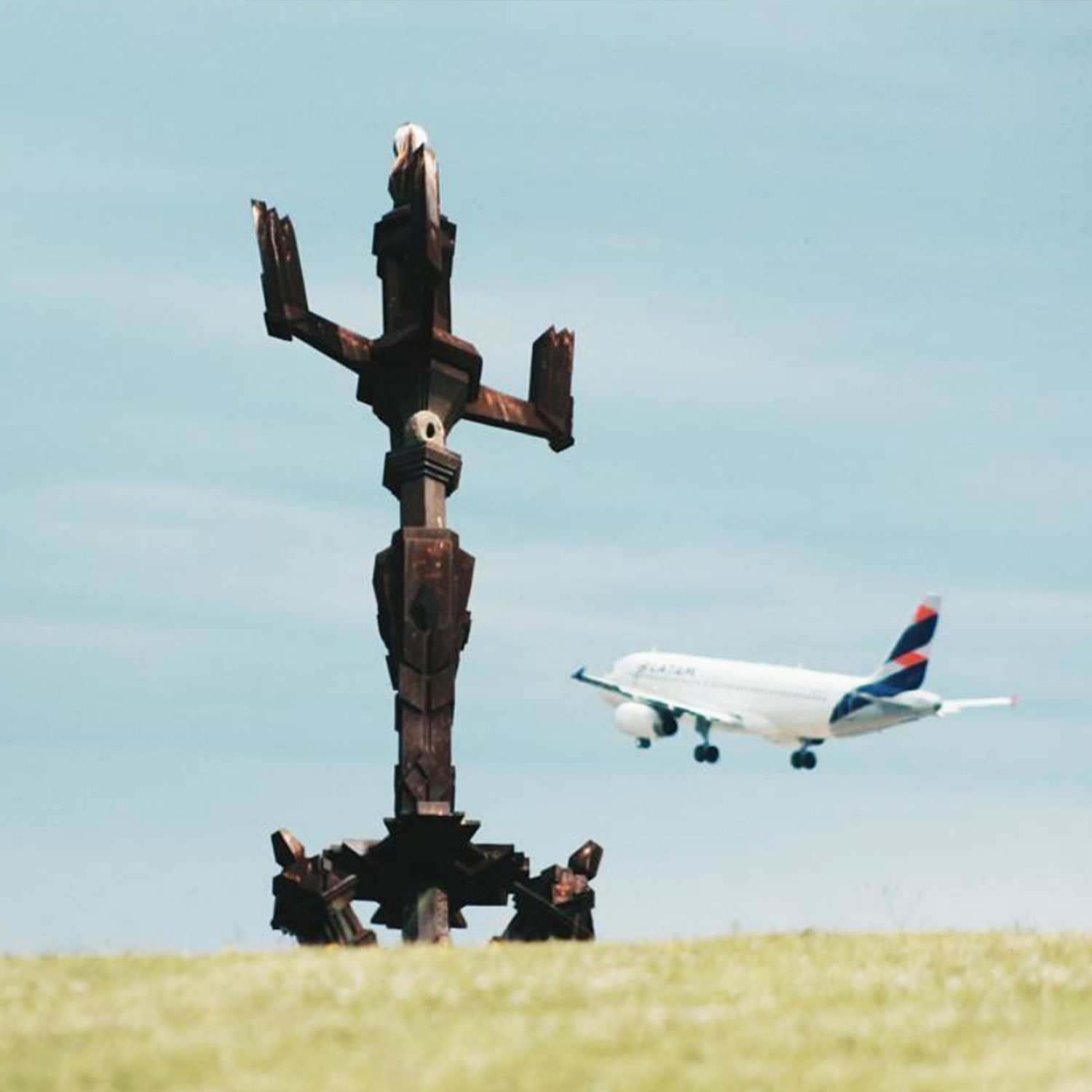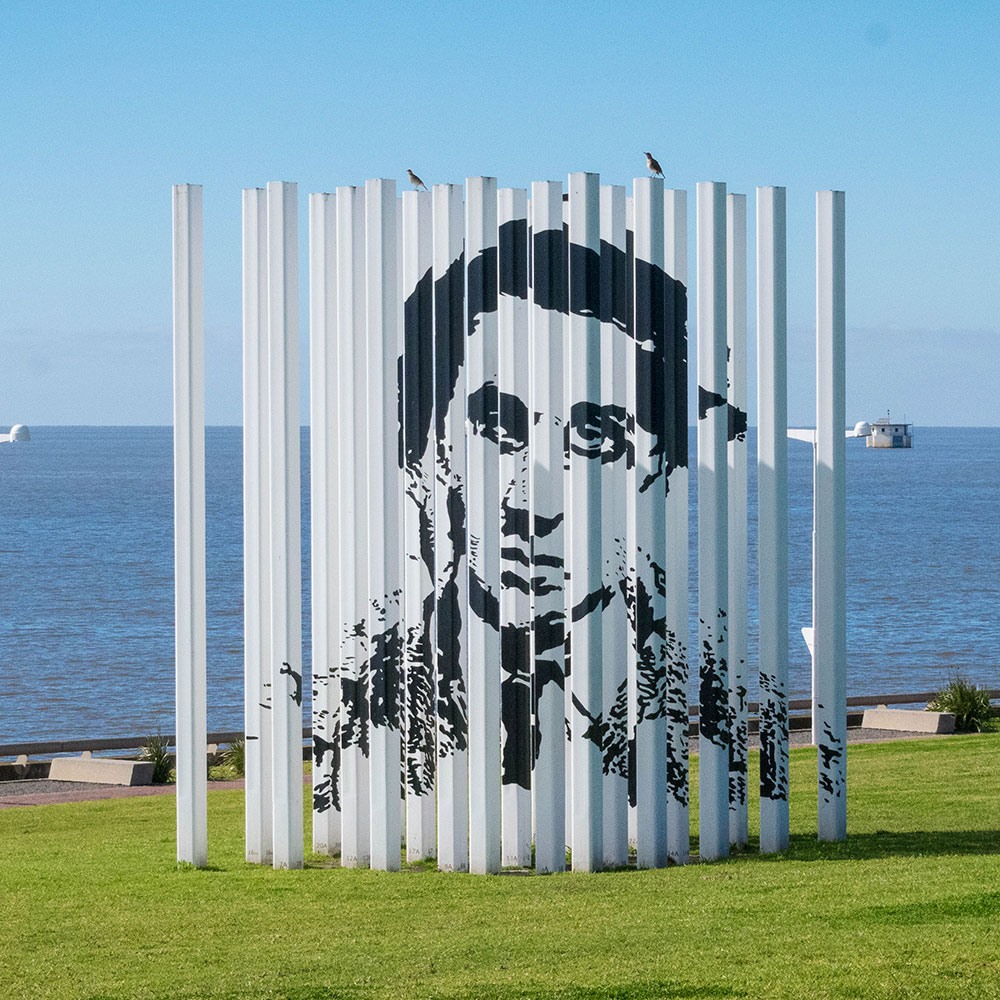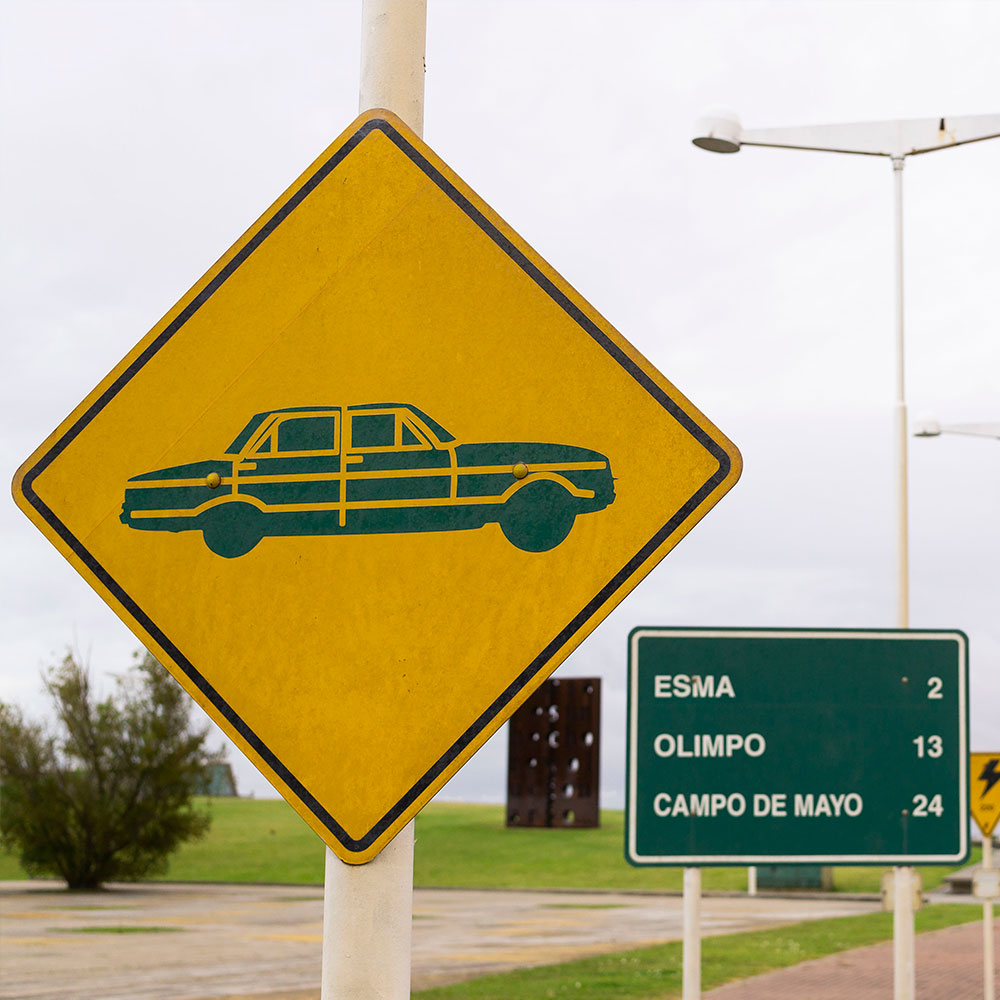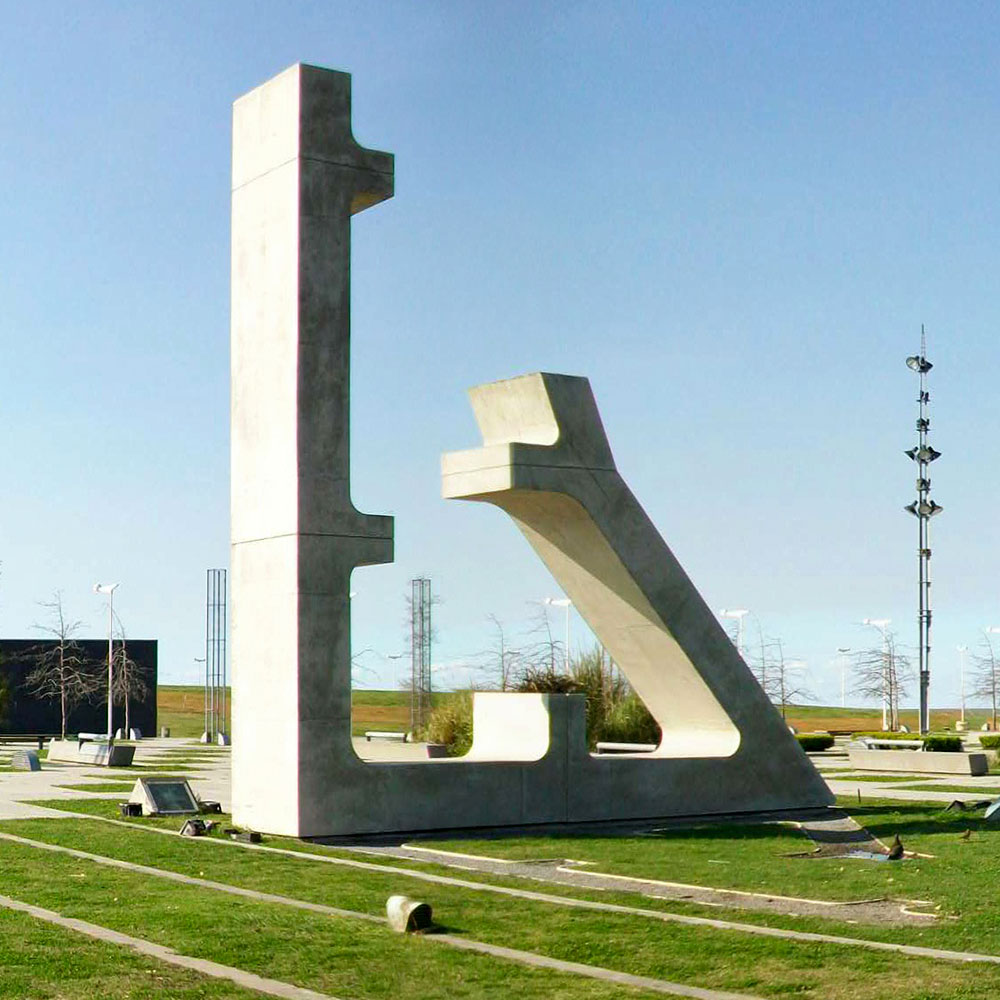Victory
William Tucker
White concrete and broken stone 7.60 x 6 x 1.30 m
1999–2001
The artist projected a geometric form, broken and incomplete, that alludes to the truncated lives of the dissappeared. The construction process for the piece is closely related to its symbolic significance. Concrete was poured into a mold excavated into the ground at the installation site and once set, the piece was raised vertically, in a metaphorical reference to revealing that which remained secret during the dictatorship.
William Tucker (Cairo, Egypt, 1935). He studied at Oxford University, at the Central School of Art and Design and at St. Martin’s School of Art in London. He received grants from Leeds University (1968), the Guggenheim Foundation (1980) and the National Endowment for the Arts (1986). He participated in the Paris Biennial (1961), the Venice Biennial in 1972, and that in Sydney in 1976. Outstanding among his works installed in public spaces are «The Promise», Grove Isle Sculpture Gardens, Miami (1982); «Victory», 5th Avenue, New York (1983); «Gymnast II» (Museum of Modern Art in New York, 1986); and «Maja» (Nice), Parque de Esculturas de Bilbao, Spain (1998). He has exhibited regularly in the world’s leading galleries and museums since 1960. In recent years, he has shown
on reiterated occasions at the McKee Gallery in New York. His works can be found in the collections of the DeCordova Museum in Massachusetts; the Storm King Art Center in Mountainville (New York); the Runnymede Sculpture Farm en Woodside, California; the Leeds City Art Gallery; the Tate Liverpool; the Royal Academy of Arts and the Tate Britain, both in London. In 2010 he was awarded the career recognition prize by the International Sculpture Center. He currently lives and works in Massachusetts, USA.
